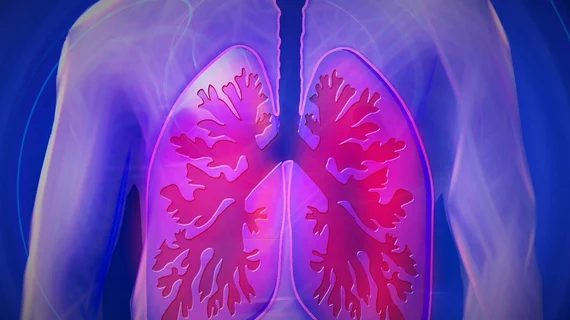Diffusion-weighted MRI comparable, superior for differentiating between pulmonary lesion types
Diffusion-weighted MRI (DW-MRI) is a similar or superior imaging modality compared to fluorine 18-fluorodeoxyglucose PET/CT (18F–FDG PET/CT), for diagnosing between malignant and benign pulmonary lesions, according to the results of a meta-analysis published in Radiology.
“The few studies that compared DW-MRI and PET/CT for differentiation of malignant from benign pulmonary nodules demonstrated similar accuracies between the two modalities. However, to our knowledge, there are no meta-analyses on this topic,” wrote lead author Adriano Basso Dias, MD, of the Pavilhao Pereira Filho Hospital in Porto Alegre, Brazil, and colleagues.
The researchers sought to assess and compare the performance of 18F-FDG PET/CT and DW-MRI and their ability to characterize pulmonary nodules and masses as malignant or benign. They searched Pubmed, Embase, and Cochrane databases to find studies. Dias et al. focused on studies that directly compared DW-MRI and 18F-FDG PET/CT in an attempt to reduce interstudy heterogeneity.
Dias and colleagues analyzed the results of 37 studies—23 focused on 18F-FDG PET/CT, eight on DWI-MRI, and six focused on both modalities. The meta-analysis had 4,224 participants and 4,463 study participants. In the primary analysis of joint DW-MRI, they found 83 percent sensitivity and 91 percent specificity. This is compared to 78 percent sensitivity and 81 percent specificity for 18F-FDG PET/CT.
Additionally, the researchers found DW-MRI had an AUC of 0.93, compared with 0.86 for 18F-FDG PET/CT. The diagnostic odds ratio of DW-MRI was also greater than that of 18F-FDG PET/CT.
“We found that the diagnostic performance of diffusion-weighted DW-MRI was comparable or even superior to that of 18F-FDG PET/CT for the noninvasive work-up of suspicious pulmonary nodules and masses,” the researchers wrote.
The researchers noted further research, or larger scale randomized controlled trials are needed to directly compare the efficacy of DW-MRI and 18F-FDG PET/CT in differentiating pulmonary nodules and masses as malignant or benign.
“This meta-analysis supports the inclusion of DW-MRI as a radiation-free and less costly imaging modality for the primary noninvasive diagnostic work-up of suspicious pulmonary lesions,” Dias and colleagues concluded.

